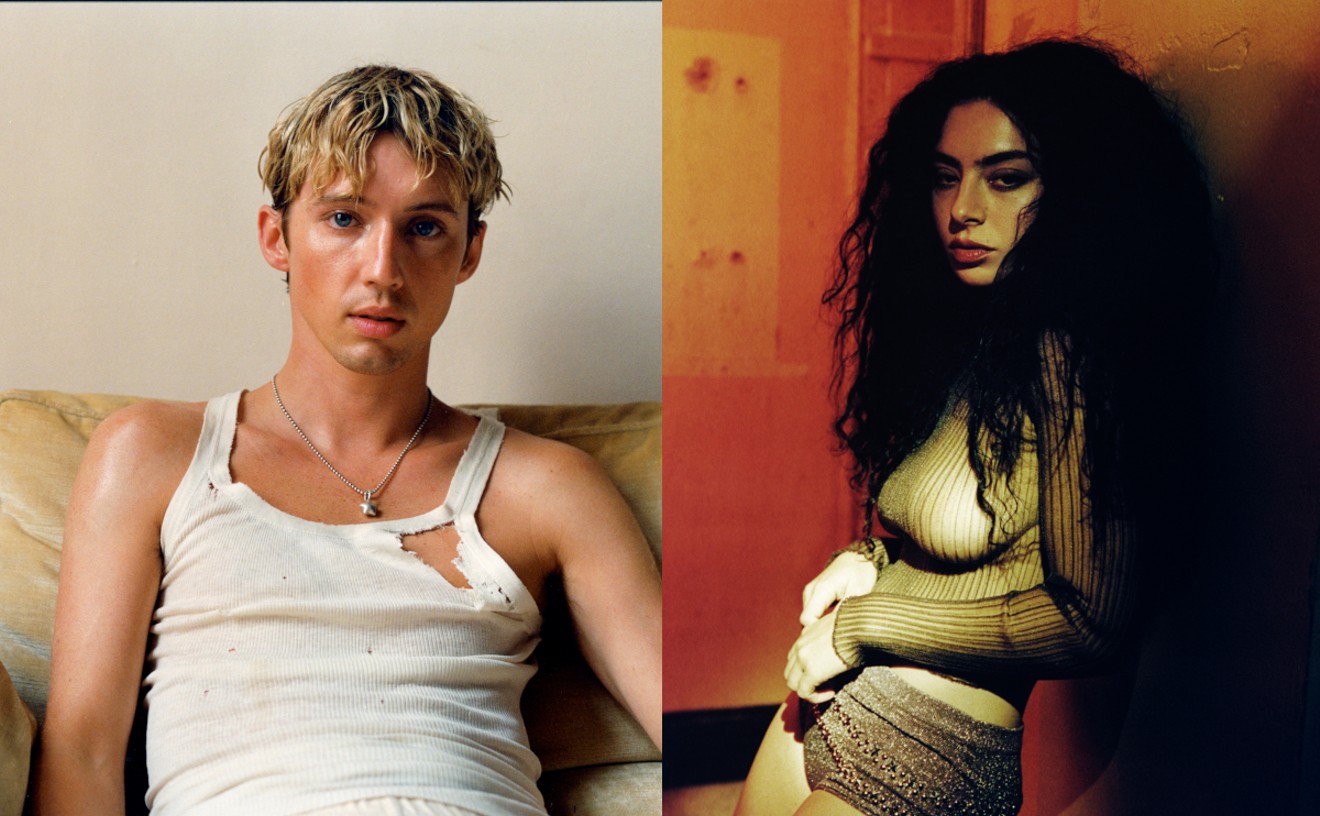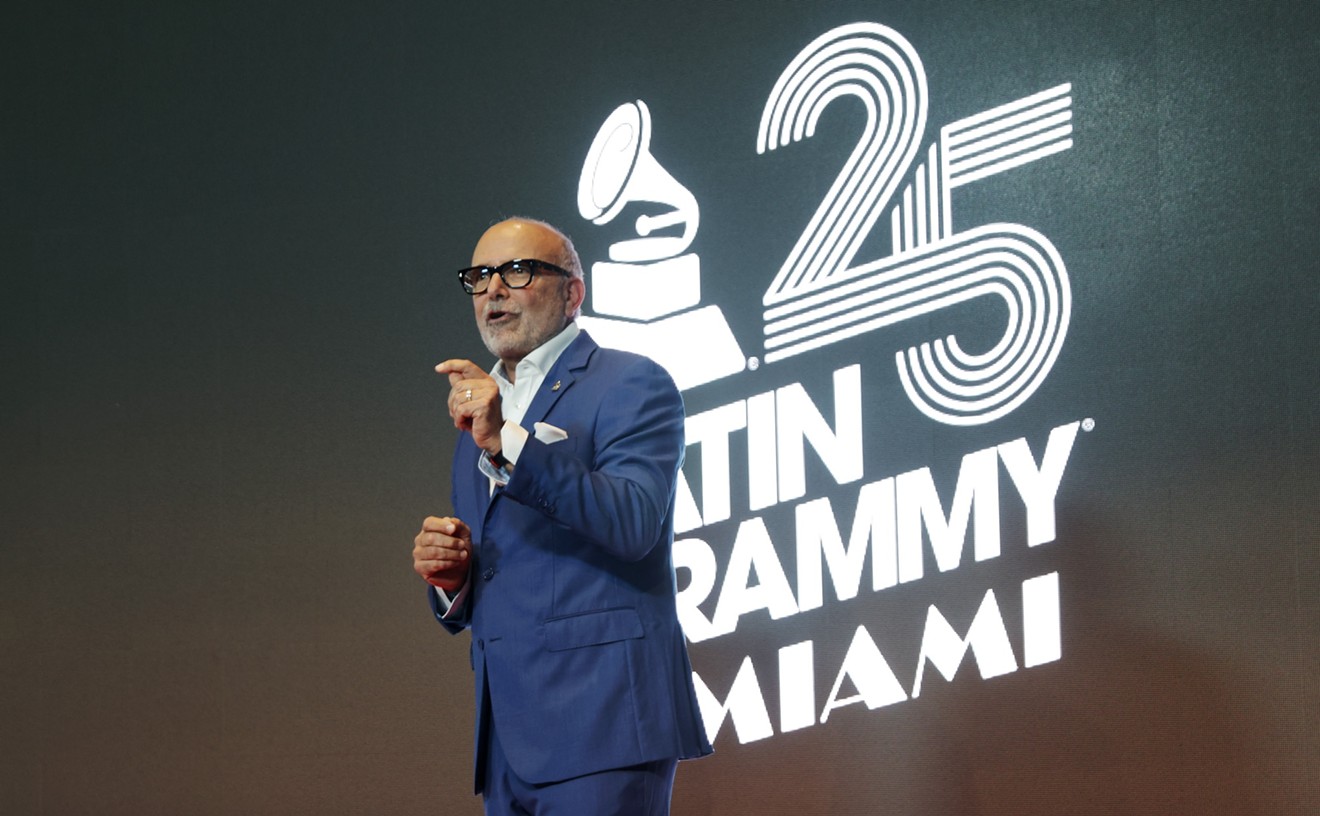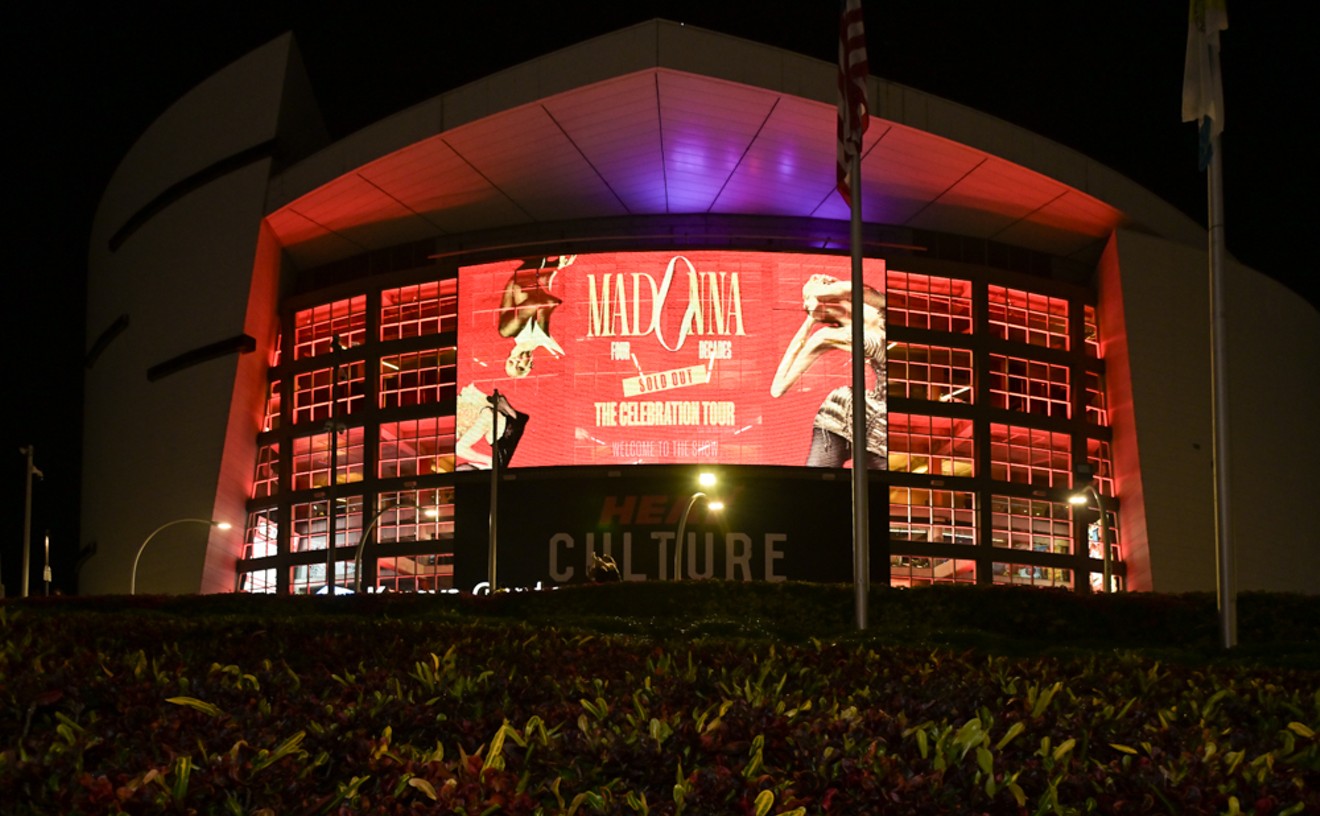Miami's rap scene is making headlines once again, this time for a music video showing an 18-year-old unsigned hellion waving AKs and pounds of cocaine in the air. Stitches, named for his sewn-up Glasgow Smile tattoo, has garnered more than 8 million views for "Brick in Yo Face" on WorldStarHipHop since the clip's April 30 premiere.
Sure, the video is way over the top. Dude seriously loves selling blow. But aside from all the coke falling like snowflakes and absurd verbiage, we were interested to see that homeboy is a white kid. It got us thinking how strange Caucasians can be in their approach to hip-hop. Through the years, they've always been a little -- different.
See Also: Vanilla Ice on Almost Dying, Joining the Juggalos, and "Living the American Dream"
Beastie Boys
A lot of people talk about white people in hip-hop like it was something new in the '90s, but that's just not true. Rap pioneer and producer Rick Rubin was white, and he was one of the founding members and producers at Def Jam Records, right alongside Russell Simmons. Their combined contributions to the world of hip-hop were instrumental. They introduced the world to artists including LL Cool J, Public Enemy, and who could forget those three Jewish kids from Brooklyn known as the Beastie Boys. Sure, they always had a punk-rock edge, but they were just as hip-hop as anyone else, and they're almost always overlooked as legitimate white representation in the earliest days of the scene. White people been here, doing things their own wacky-ass way since the get-go.
See also: Five Reasons Today's Rappers Are Fakes
Vanilla Ice
Of course, it wasn't just the Beasties putting it down for white people. MC Serch and Pete Nice of the late-80s rhyme crew 3rd Bass were white, and they were mad respected. Snow was the white Canadian reggae artist who got big in the early '90s. House of Pain were three drinkin' Caucasian guys, putting their storytelling skills to work on the mic. Of course, though, the white dude everyone remembers most is the infamous Vanilla Ice.
Up to this point, white people had been doing alright in the game by being honest about their upbringing, their interests, and their lifestyle. They were true to themselves, but Ice caught a bad rap when fans found out his thuggish biographical history was all faked. It didn't help that Queen wanted to sue him for stealing the "Under Pressure" beat, nor that cheesy appearance in the Ninja Turtles movie. Once Ice was outed, it seemed no white person would ever hold their head up high behind the mic again.
See also: Review & Photos: Vanilla Ice, Juggalos, and Hot Mamis Rage at the Zoo: "Word to Your Mother, Miami!"
Eminem
All white people weren't shamed from the game. Established artists continued to have their fanbases, but it wasn't until a sharp-nosed spitter from Detroit hit the scene, backed by none other than the most-gangster Dr. Dre, that the question of "Can white people rap?" was finally put to rest. Eminem hit the world stage in a blaze of inglorious rage, offending the entire world, regardless of race, sex, creed, or walk of life. It was absolutely brilliant, and his skills were undeniable. His success was so great that he spawned a whole new generation of white rappers. Remember Bubba Sparxxx? And Kid Rock was also from Detroit. Shit, they let baby Aaron Carter have a career -- for a minute. Not everyone could be as respected as Eminem, but the floodgates were officially open.
See also: Eminem Isn't a Sellout: In Defense of Marshall Mathers
Modern Times
These days, no one gives a shit if you're white and rap. There's been debate about whether light skin makes it easier to win a Grammy, but Macklemore isn't undeserving of reward. Whether you're an independent artist, a major-label mouthpiece, or some kind of hybrid rock-shocker, clown-faced, pot-smoking joker, the best policy as a white rapper is to just be yourself.
Maybe you're Stitches, you love selling blow, and you have an AK-47 tatted on your face. Maybe you're Lakutis and your "Jesus Piece" is your whole body, and your nose is bleeding, and you're covered in gold. Maybe you're Little Dicky and you're "Too High" and Jewish to fuck your girlfriend because you're pretty sure her "Ex-Boyfriend" has the biggest dick in the world. Or you're Mac Miller and you're getting sued by "Donald Trump," but don't care because you're stuck thinking about outer space. Or you're Yelawolf, or Action Bronson, or, well, you get it. The world will respect you more for just wearing your silly whiteness on your sleeve.
See also: Macklemore: "If You Want to Be an Active Participant in Hip-Hop, Get Off the Couch"
Mah Ladies
Before we end this little history lesson, let's give a special shout out to the ladies. It's always been difficult to be a lady rapper, and it's only recently been acceptable for white people to hit a mic without funny stares. Imagine what it must be like to have pale tits and a dream. These ladies are still fighting to stake their claim in the game, but their presence is up with acts like Iggy Azalea, Die Antwoord's Yo-Landi, Brooke Candy, Kreayshawn, and the like. (Side question: Are white people allowed to claim Snow Tha Product?) Some of these chicks are more respectable than others, yes, but just wait until we get our Eminem. It should be any day now...
Crossfade's Top Blogs
-Five Signs You Might Be a Shitty Rapper
Follow Kat Bein on Twitter @KatSaysKill.
Follow Crossfade on Facebook and Twitter @Crossfade_SFL.











